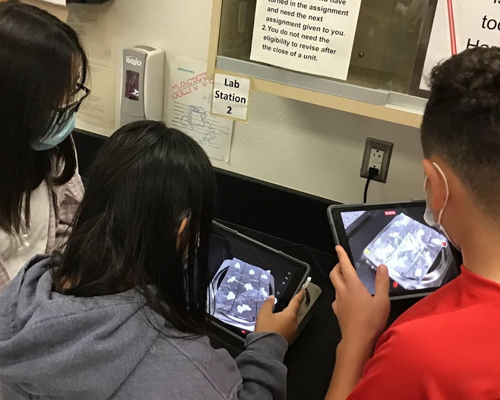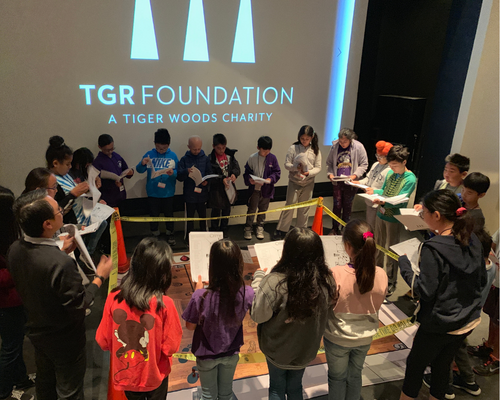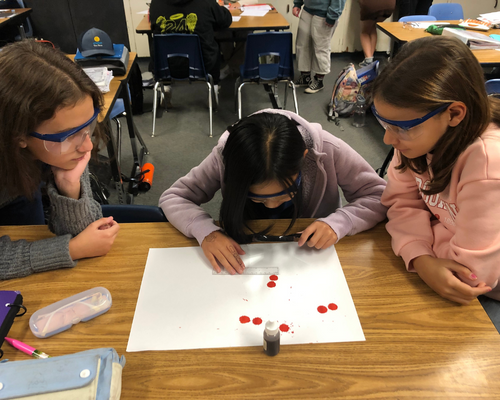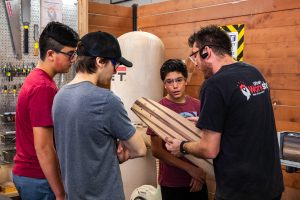Local schools find an innovative way to teach STEM through crime scene investigation and forensics programs.
There’s just something about crime scene investigation that captivates people.
Judging from the number of TV shows and films that incorporate CSI and forensics, it should be of no surprise that even schools and educational programs are using it as a way to teach real-life practical science to students of all grade levels.
“Forensic science is used to help teach students in various ways through Project-Based Learning and Universal Design,” said Noelle A. Martinez, sixth- and eighth-grade science teacher at Talbert Middle School in the Fountain Valley School District. “Every year the co-teacher and I determined a historical event and crime scene in which the students would have to solve the simulated crime case. Therefore, forensic science incorporated the 21st-century skills framework by applying science to solve real-life problems utilizing critical skills-based learning, math, engineering and technology to solve crime scenes.”
Martinez said that she developed the curriculum for an introductory course into the different subsections of forensic science for a seventh-grade elective class and after-school club.
“The students have taken to forensic science with enthusiasm and passion,” she said. “The students enjoy the program and have gotten to learn more about the justice system as well as introduce forensic science as a career path.”
Tustin Unified School District’s Orchard Hills (K-8) offers a Medical Detectives program that involves investigating health-related issues.
Henry Nguyen, of Medical Detectives, said the program has been offered since 2019 and it started because of the growing interest in the medical field.
“Some of the things we learn about include techniques used in investigating medical cases, learning the different pieces of technology used in the medical field,” said Nguyen. “Students have found this class to be a valuable learning experience and students have even asked if there is a course that follows this course that they can enroll in.”
Related Posts:
Nguyen said he’s had students tell him that because of the course, they are pursuing a program in STEM, at the high school or college level.
“Students often say their favorite part of this course has been the brain dissection/investigation,” he said.
Capistrano Unified School District has a pretty extensive forensics program at multiple schools. Forensic science is offered at San Juan Hills High School, Aliso Niguel High School, Dana Hills High School and Capistrano Union High School. Biotechnology — the processing of evidence that goes along with forensics — is offered at Aliso Niguel High School, Dana Hills High School, and CSI is offered at Capistrano Union High School. Aliso Viejo Middle School and Don Juan Avila Middle School offer forensic science courses as well, and those schools feed into Aliso Niguel High School.
Kim Thomas, director of Instructional Services in CUSD’s College and Career Advantage department, said lessons involve crime scene analysis and reconstruction, and analysis of glass, ballistics, impressions, fingerprints, handwriting, chromatography, drugs/toxicology, blood, DNA, anthropology, autopsy, hair and fibers.
“Each one of these schools sets up mock crime scenes for students to collect and analyze evidence,” said Thomas.
While some districts and schools have in-house programs, others have also partnered with local organizations like the TGR Foundation (A Tiger Woods Charity) and Coastline Regional Occupational Program.
Centralia School District recently participated in the foundation’s forensic science program at the TGR Learning Lab in Anaheim with two of its elementary schools.
Gyla Bell, senior director of programs at TGR Foundation, said they offer a one-week field trip where students are introduced to the field of crime scene investigation through a staged gem heist.
“Students use their observation and deduction reasoning skills to approach a crime scene and perform experiments using chemistry, biology and physics to analyze evidence and draw conclusions,” Bell said.
Coastline Regional Occupational Program also works with local schools. Clint Kirkwood is a Coastline ROP instructor of Administration of Justice (AOJ) and Crime Scene Investigation (CSI) at Creekside High School in Irvine. A retired police officer, he’s offered this program at various OC schools for 16 years.
“The forensic/crime scene investigation course is designed to give the students both theory and hands-on experience in the skills and knowledge required for a forensic crime scene investigator position in law enforcement,” said Kirkwood.
Colin Woodward, science and forensics teacher at Brea Junior High, said their class covers crime scene documentation, analysis of trace evidence such as hairs and fibers, fingerprinting, blood evidence, questioned documents and forensic entomology.
“I have a lead crime scene investigator from the Brea Police Department come and do a presentation for the students as a guest speaker, which the students love,” said Woodward. “Students solve a large case at the end of the semester, which includes microscopic analysis of evidence and sifting through interviews and investigations reports. All of the investigative skills learned throughout the semester are finally put to test to solve the final mystery.”
By Jessica Peralta











Leave a Reply